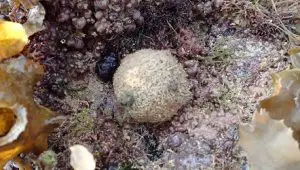Golfers often encounter the problem of hitting their balls into ponds or other bodies of water on golf courses. Retrieving these golf balls can be a challenge, but with the right techniques, you can clean them effectively and use them again. Here are some steps on how to clean golf balls from ponds:
- Gather necessary equipment: You will need a bucket or container, a mesh bag or strainer, gloves, and a brush. You can use a golf ball washer or cleaner if available.
- Retrieve the golf balls: Use a retriever or wade into the water and retrieve the golf balls by hand. Be careful not to disturb the surrounding areas or harm any wildlife.
- Sort the golf balls: Separate the golf balls by brand, model, and condition. This will help you determine which ones are worth cleaning and using again.
- Rinse the golf balls: Rinse the golf balls thoroughly with water to remove any dirt or debris. Use a brush to scrub any stubborn stains or marks.
- Soak the golf balls: Fill a bucket or container with water and add a mild detergent or golf ball cleaning solution. Place the golf balls inside and let them soak for a few hours or overnight.
- Scrub the golf balls: Use a brush to scrub the golf balls while they are still in the cleaning solution. Be sure to scrub all sides of the ball, including the dimples.
- Rinse the golf balls again: After scrubbing, rinse the golf balls thoroughly with water to remove any remaining cleaning solution.
- Dry the golf balls: Place the golf balls on a towel or drying rack to air dry completely before using them again.
Additional Tips:
Here are a few additional tips to help you clean golf balls from ponds:
- Use gloves: Wearing gloves can protect your hands from any potential hazards in the water, such as sharp objects or chemicals. They can also provide a better grip when handling the golf balls.
- Use a mesh bag or strainer: Placing the golf balls in a mesh bag or strainer can make them easier to handle and help prevent them from rolling away. This can be especially helpful when retrieving golf balls in deeper water.
- Use a golf ball washer or cleaner: If you have access to a golf ball washer or cleaner, this can make the cleaning process faster and more efficient. Simply place the golf balls inside and let the machine do the work for you.
- Be gentle: While it’s important to clean the golf balls thoroughly, be careful not to damage them in the process. Avoid using abrasive materials or harsh chemicals that could damage the ball’s surface or affect its performance.
- Sort the golf balls by condition: If you retrieve a large number of golf balls, it can be helpful to sort them by condition. You may find that some are in better shape than others, and this can help you decide which ones are worth cleaning and using again.
- Consider donating or recycling: If you end up with more golf balls than you need, consider donating them to a local golf course or charity. You can also recycle them through companies that specialize in golf ball recycling.
Cleaning golf balls from ponds may take some time and effort, but it can be a rewarding way to save money and reduce waste. With these tips, you can retrieve and clean your golf balls effectively and get back to playing your best game.
Methods for Cleaning Golf Balls from Ponds
| Method | Description | Pros | Cons | Equipment Needed |
|---|---|---|---|---|
| Hand Retrieval | Physically retrieving golf balls by hand | Low cost | Time-consuming | Gloves, bucket |
| Golf Ball Retrievers | Telescoping tools to retrieve golf balls from water | Less physically demanding | Limited reach | Golf ball retriever |
| Golf Ball Divers | Professional divers who retrieve golf balls for resale | Fast and efficient | Expensive | Professional diver, boat |
| Water Vacuum | A device that sucks up water and golf balls from ponds | Fast and efficient | Expensive | Water vacuum |
| Netting | Placing nets in the pond to catch golf balls | Can catch a large number of balls | Can be unsightly | Nets, poles |
Equipment for Cleaning Golf Balls from Ponds
| Equipment | Description | Pros | Cons | Cost |
|---|---|---|---|---|
| Gloves | Protective handwear for hand retrieval | Inexpensive | Limited reach | $5-10 |
| Bucket | Container for carrying retrieved golf balls | Inexpensive | Limited reach | $5-10 |
| Golf Ball Retriever | Telescoping tool for retrieving golf balls from water | Extended reach | Limited reach | $20-50 |
| Professional Diver | Certified diver for retrieving golf balls for resale | Fast and efficient | Expensive | $100-500 per hour |
| Water Vacuum | Device for sucking up water and golf balls from ponds | Fast and efficient | Expensive | $500-1000 |
| Nets | Placed in the pond to catch golf balls | Can catch a large number of balls | Can be unsightly | $50-100 |
Safety Equipment for Golf Ball Retrieval
| Equipment | Description |
|---|---|
| Life Jacket | Flotation device for water safety |
| Waders | Waterproof clothing for standing in water |
| Eye Protection | Protective eyewear to prevent eye injury |
| Sunscreen | Protection from harmful UV rays |
| Hat | Protection from the sun |
Hazards to Watch Out For When Retrieving Golf Balls
| Hazard | Description |
|---|---|
| Poisonous Plants | Plants such as poison ivy or poison oak can cause skin irritation |
| Wildlife | Snakes, alligators, and other wildlife can pose a danger |
| Slippery Surfaces | Rocks and algae can make surfaces slippery |
| Water Depth | Deeper water can pose a drowning risk |
| Sharp Objects | Broken glass, fishing hooks, and other sharp objects can be present |
Tips for Cleaning Golf Balls from Ponds
| Tip | Description |
|---|---|
| Wear Gloves | Protect hands from rough or dirty surfaces |
| Use a Golf Ball Retriever | Avoid getting wet and reaching too far |
| Be Aware of Hazards | Watch out for poisonous plants, wildlife, slippery surfaces, deep water, and sharp objects |
| Work in Pairs | Have someone to help keep an eye on you and assist if necessary |
| Clean Golf Balls | After retrieving golf balls, clean them thoroughly before use |


